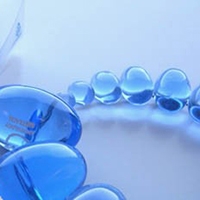Regulation of spermatogenesis
Regulation of spermatogenesis is a Research Project for the Clinical Andrology Research Group, under the Centre for Endocrinology and Metabolism.
Project Leader
 Male fertility relies on the normal development of sperm in the testes. The process of sperm development (spermatogenesis) is exceedingly complex, and involves the somatic Sertoli cells supporting and nurturing male germ cells as they divide, undergo meiosis and differentiate into spermatozoa.
Male fertility relies on the normal development of sperm in the testes. The process of sperm development (spermatogenesis) is exceedingly complex, and involves the somatic Sertoli cells supporting and nurturing male germ cells as they divide, undergo meiosis and differentiate into spermatozoa.
Men currently play a major role in contraception through natural family planning, condom use and sterilisation but new effective, reversible and acceptable options are needed. In stable couples, male hormonal contraception (MHC) is a promising approach based on testosterone treatment (usually by injection), often in combination with a progestin (a component of the female hormonal methods), acting to suppress the pituitary hormones that drive sperm production. About 95 per cent of men show suppression of sperm count to a degree that will probably provide contraception of the same effectiveness as the female oral contraceptive. We were one of eight sites world-wide involved in the World Health Organisation (WHO)-sponsored multi-centre clinical trials of a male reversible contraceptive. This phase IIb trial involved several hundred couples and aimed to determine the safety and efficacy of a bi-monthly injection of testosterone and a synthetic hormone, progestin. The data are now being prepared for publication and will inform future studies in this important field
A major focus has been investigating how the hormones FSH, LH and androgens promote and support spermatogenesis in order to better understand how to design effective male contraceptives. Translational studies have pinpointed the sites of hormone action during male germ cell development in rodents, primates and men. For example, these studies revealed that spermatogonial development and sperm release are key targets of FSH and androgen action.
Further studies have investigated the mechanisms by which FSH and androgens regulate sperm production within the seminiferous tubules of the testis. These include studies defining the changes in mRNA transcription and protein translation during hormone suppression and replacement, and the discovery of a role for miRNAs in “transducing” the hormonal signals within Sertoli cells.
Major collaborators
Prof Bill Bremner – University of Washington
Assoc Prof Craig Harrison – Hudson Institute of Medical Research
Assoc Prof Mark Hedger – Hudson Institute of Medical Research
Prof David Handelsman– ANZAC Research Institute
Dr Liza O’Donnell – Hudson Institute of Medical Research
Dr Peter Stanton – Hudson Institute of Medical Research
WHO Male Fertility Regulation study team
Selected publications
Haverfield JT, Meachem SJ, O’Bryan MK, McLachlan RI, Stanton PG. Claudin-11 and connexin-43 display altered spatial patterns of organization in men with primary seminiferous tubule failure compared to controls Fertility and Sterility (2013) 100 (3): 658-66.
Tarulli GA, Stanton PG, Loveland KL, Meyts ER, McLachlan RI, Meachem SJ. A survey of Sertoli cell differentiation in men after gonadotropin suppression and in testicular cancer Spermatogenesis (2013) 3 (1): e24014
Stanton PG, Sluka P, Foo CFH, Stephens AN, Smith AI, McLACHLAN RI, O’Donnell L. Proteomic changes in rat spermatogenesis in response to in vivo androgen manipulation; Impact on meiotic cells PLoS ONE (2012) 7 (7): art.no.e41718
O’Donnell L, McLachlan RI. The role of testosterone in spermatogenesis Testosterone: action, deficiency, substitution. (2012) 4th ed. 123-153.
Nicholls PK, Harrison CA, Walton KL, McLachlan RI, O’Donnell L and Stanton PG. Hormonal Regulation of Sertoli Cell microRNAs at Spermiation. Endocrinology. (2011) 152 (4): 1670-1683
O’Donnell L, Nicholls PK, O’Bryan MK, McLachlan RI, and Stanton PG. (2011) Spermiation: The Process of Sperm Release. Spermatogenesis. 1(1): 14-35
O’Donnell L, Pratis K, Wagenfeld A, Gottwald U, Müller J, Leder G, McLachlan RI, Stanton PG. (2009) Transcriptional profiling of the hormone-responsive stages of spermatogenesis reveals cell-, stage-, and hormone-specific events. Endocrinology. 150: 5074-84
Ruwanpura SM, McLachlan RI, Matthiesson KL, Meachem SJ. (2008). Gonadotrophins regulate germ cell survival, not proliferation, in normal adult men. Hum Reprod 23:403-411
Liu PY, Swerdloff RS, Anawalt BD, Anderson RA, Bremner WJ, Elliesen J, Gu YQ, Kersemaekers WM, McLachlan RI, Meriggiola MC, Nieschlag E, Sitruk-Ware R, Vogelsong K, Wang XH, Wu FC, Zitzmann M, Handelsman DJ, Wang C. (2008) Determinants of the rate and extent of spermatogenic suppression during hormonal male contraception: an integrated analysis. J Clin Endocrinol Metab. 93: 1774-1783
Aaltonen P, Amory JK, Anderson RA, Behre HM, Bialy G, Blithe D, Bone W, Bremner WJ, Colvard D, Cooper TG, Elliesen J, Gabelnick HL, Gu YQ, Handelsman DJ, Johansson EA, Kersemaekers W, Liu P, MacKay T, Matlin S, Mbizvo M, McLachlan RI, Meriggiola MC, Mletzko S, Mommers E, Muermans H, Nieschlag E, Odlind V, Page ST, Radlmaier A, Sitruk-Ware R, Swerdloff R, Wang C, Wu F, Zitzmann M. (2007) 10th Summit Meeting consensus: recommendations for regulatory approval for hormonal male contraception. J Androl. 28: 362-363.
Matthiesson KL, McLachlan RI, O’Donnell L, Frydenberg M, Robertson DM, Stanton PG Meachem SJ. (2006) The relative roles of FSH and LH in maintaining spermatogonial maturation and spermiation in normal men. J Clin Endocrinol Metab. 91: 3962-3969


